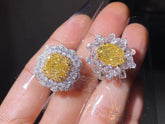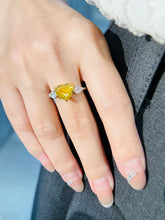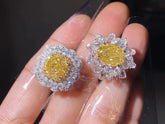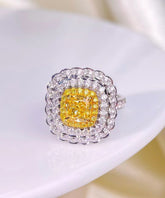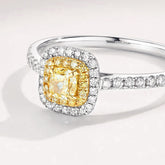With the rise of laboratory-grown diamonds, the freedom of carats may no longer be considered a luxury.

'Cultivated diamond' is a trade name for synthetic or laboratory-grown diamonds, referring to crystals that are manufactured in laboratories or factories using specific techniques and processes, resulting in crystals that have the same appearance, chemical composition, and crystal structure as natural diamonds. Although laboratory-grown diamonds have been produced for several decades, it is only in recent years that laboratory-grown diamonds with gem-quality characteristics have emerged.

The Road to Legitimizing Cultivated Diamonds
- In 2015, the International Organization for Standardization (ISO) issued the standard 'Jewellery—Consumer confidence in the diamond industry' (ISO 18323-2015), clarifying 'synthetic diamond' and 'laboratory-grown diamond' as synonymous terms.
- In 2018, the Federal Trade Commission (FTC) of the United States revised the definition of diamonds, removing the limitation to natural origins.
- At the end of March 2019, the International Gemological Institute (IGI) announced that its latest version of certificates would use the term 'laboratory-grown diamond' instead of 'synthetic diamond.'
- In August 2020, the Gemological Institute of America (GIA) introduced a new digital laboratory-grown diamond grading report.
- In October 2020, CIBJO issued the 'Laboratory-Grown Diamond Guidance,' ensuring consumer confidence in the diamond industry and stating that laboratory-grown diamonds are not suitable for grading, and their certificates should be distinct from those of natural diamonds.
- On December 30, 2020, the National Gemstone Testing Center (NGTC), under the Ministry of Natural Resources, released the standard Q/NGTC-J-SZ-0001—2020 'Identification and Quality Evaluation of Synthetic Diamonds,' replacing the enterprise standard issued and implemented by NGTC in 2019, which officially took effect on February 1, 2021.
Compared to the 2019 version, the 2020 version of the enterprise standard has two main changes:
First, the change in naming conventions.
The 2019 version used the 'two-name method': the basic name was 'synthetic diamond,' with trade names being 'cultivated diamond' and 'grown diamond,' and English names being 'synthetic diamond' or 'laboratory-grown diamond.' In the 2020 version, the naming rules specify that the Chinese names should be 'synthetic diamond' or 'laboratory-grown diamond,' with the corresponding English names being 'synthetic diamond' and 'laboratory-grown diamond.'
Second, the elimination of grading and the adoption of quality evaluation.
The 2020 version of the enterprise standard states that the quality evaluation of synthetic diamonds is not related to their rarity in nature. Although it refers to the implementation of GB/T 16554 'Diamond Grading,' it no longer uses the term 'grading' but emphasizes their attributes as 'products' (quality evaluation), to clearly distinguish them from natural diamonds.
With this, cultivated diamonds have completed the 'legitimization' process by international and domestic standardization organizations and many important institutions, accelerating their entry into the market and facing the consumer end.
Carat Freedom is No Longer a Luxury
In terms of price, cultivated diamonds are priced at approximately one-third of natural diamonds, effectively filling the market gap between diamonds and moissanite. The price advantage of laboratory-grown diamonds may contribute to their expansion into a broader mainstream jewelry market. Especially in recent years, the outbreak of the global COVID-19 pandemic has reduced consumers' disposable income, accelerating the market acceptance of laboratory-grown diamonds.

Many jewelry brands have started releasing new collections of cultivated diamond engagement rings, commonly featuring center stones weighing between 1 and 3 carats.

In addition to the popular round diamonds, various fancy shapes such as oval, marquise, pear, princess, and emerald cuts are widely used. There are also colored cultivated diamonds available.
Currently, there is a gradual shift in the consumption concept of jewelry, with a noticeable trend towards jewelry becoming more like accessories, from gold to diamonds. At the same time, the rise of the new generation of consumers, the 'post-90s' and 'post-00s,' has shown characteristics such as personalized, customized, and diversified product demands. The emergence of cultivated diamonds may make achieving 'carat freedom' no longer a luxury.

Summary:
-
Definition and History: 'Cultivated diamond' is a trade name for synthetic or laboratory-grown diamonds. They have the same appearance, chemical composition, and crystal structure as natural diamonds. Laboratory-grown diamonds have been produced for several decades, but only recently have gem-quality cultivated diamonds emerged.
-
Legitimization Process: Various organizations and institutions have contributed to legitimizing cultivated diamonds. The ISO, FTC, IGI, GIA, CIBJO, and NGTC have issued standards, definitions, and guidelines to clarify the terminology and ensure consumer confidence in laboratory-grown diamonds.
-
Market Acceptance and Price: Cultivated diamonds are priced at approximately one-third of natural diamonds, making them more affordable. This price advantage has contributed to their acceptance in the market, especially during the COVID-19 pandemic, when consumer disposable income was reduced.
-
Market Trends: Jewelry brands are releasing new collections of cultivated diamond engagement ring, featuring center stones weighing between 1 and 3 carats. Various fancy shapes and colored cultivated diamonds are also available. There is a shift in jewelry consumption towards accessories, with a focus on personalized, customized, and diversified product demands, particularly among the 'post-90s' and 'post-00s' generations.
-
Consumer Consideration: The emergence of cultivated diamonds may make achieving 'carat freedom' no longer a luxury, appealing to consumers looking for more affordable options without compromising on quality or aesthetics.
Overall, the article discusses the background, legitimacy, market trends, and consumer considerations regarding cultivated diamonds, highlighting their growing acceptance and market presence as an alternative to natural diamonds.
Would you consider buying cultivated diamonds? Feel free to leave a comment~ If you enjoyed today's content, please share, like, and save.
———— / END / ————



